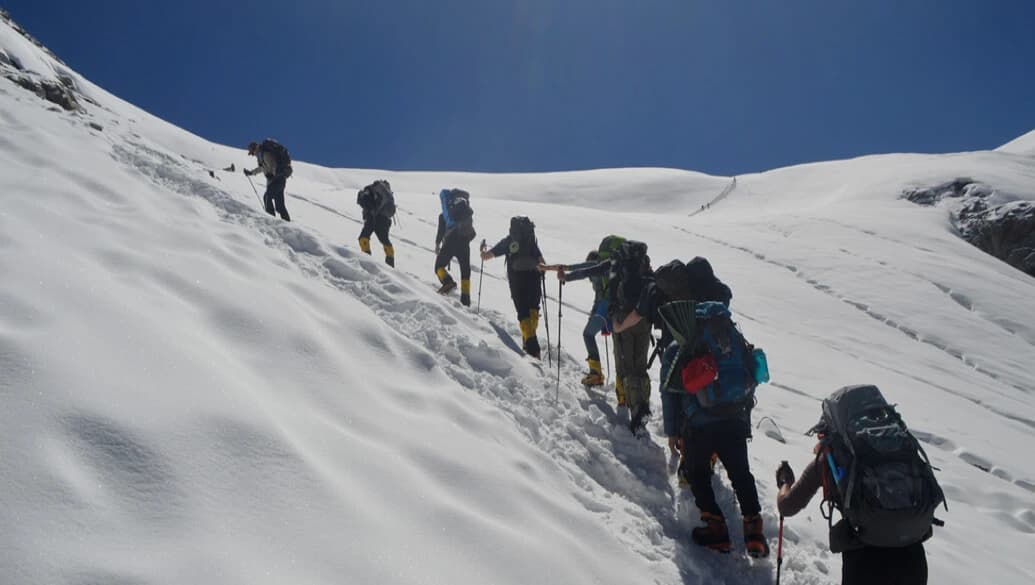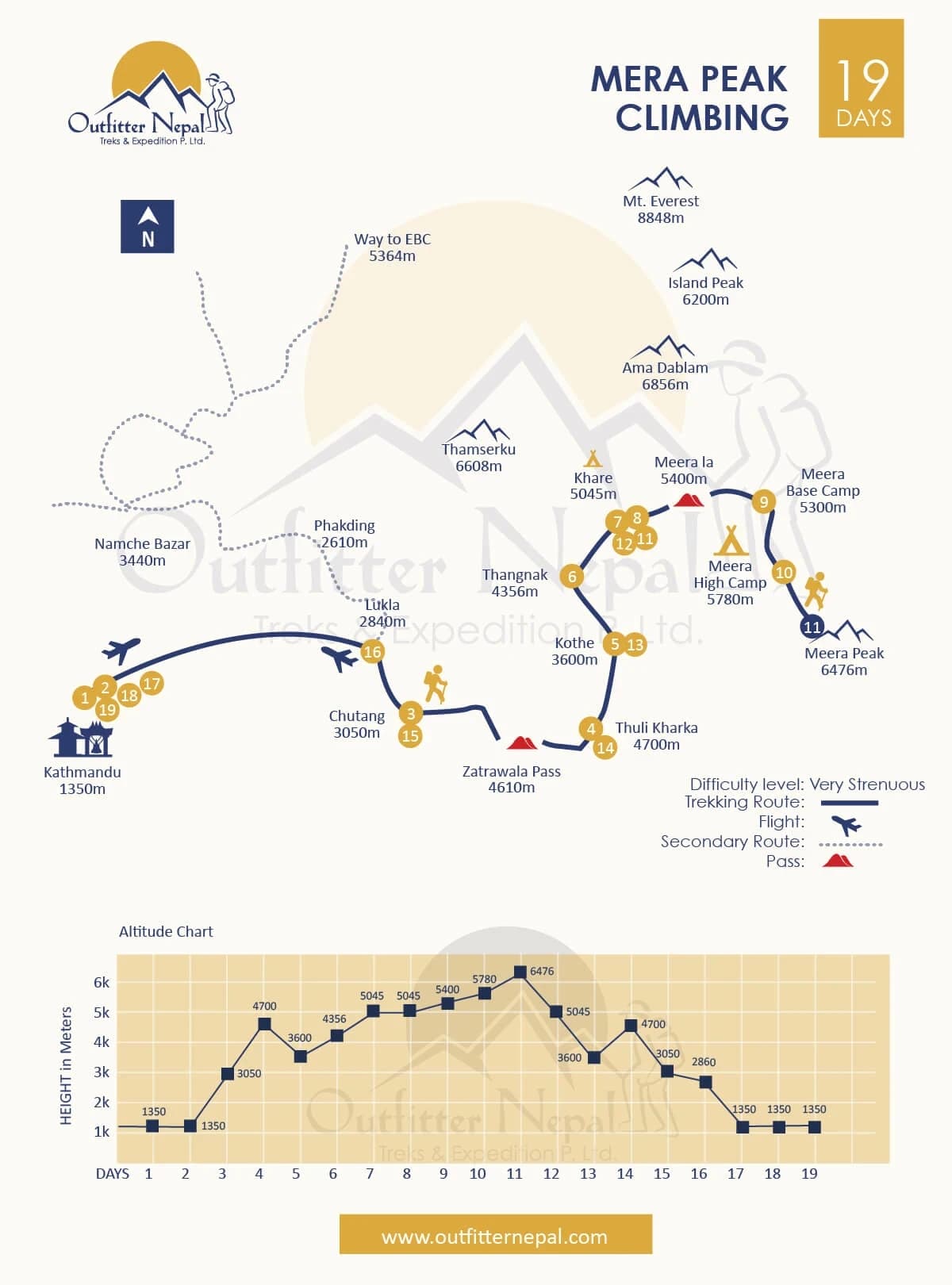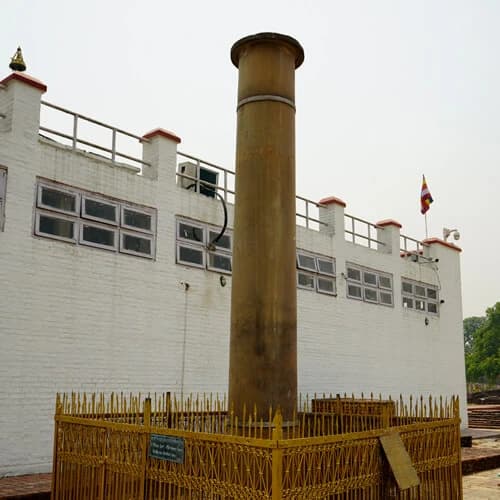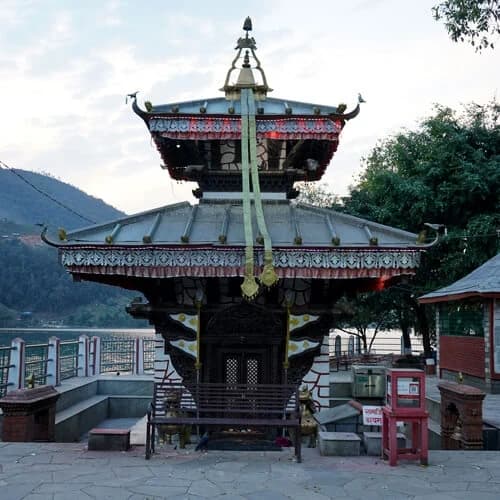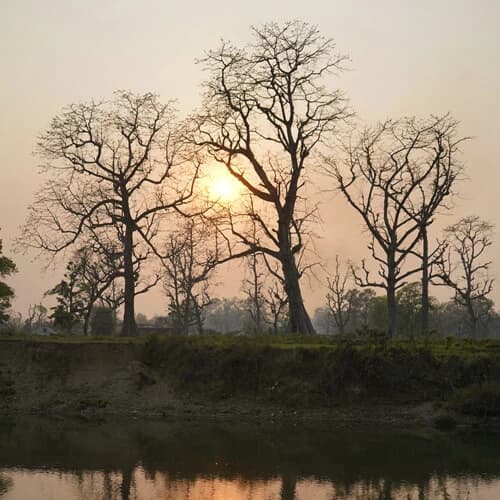Highlights of Mera Peak Climbing
- Adventurous hike in the off-beaten and less crowded trail of the Khumbu region.
- Magnificent views of the world's tallest mountains include Mt. Everest, Cho Oyu, Makalu, Lhotse, and Kanchenjunga.
- It is the perfect climbing expedition for new climbers and enthusiasts.
- Explore the magnificent Hongu and Hinku valleys.
- Learn and experience the rich cultural heritage of the Sherpa community.
- Witness picturesque villages, diverse mountain landscapes, and wildlife.
17 Days Mera Peak Climbing Overview
Mera Peak's climbing journey begins with a scenic flight to Tenzing-Hillary Airport in Lukla. Your first destination after your arrival is Chutanga, a small Sherpa Village. You will pass by similar settlements, farmlands, and forests in the next few days. Moving on, the trail takes us to the Zatrwa La pass, and on the seventh day, we arrive at Khare. This is the place where we will stay for an additional day to acclimate and have pre-climb training. From here, we go to Base Camp, then to Mera Peak High Camp. The climb to the summit begins early at 2 a.m. when the weather is less windy and stable.
During the ascend, the group members will walk in a single file secured by a strong man-rope. The climb is gradual, with no challenging sections most of the way. You might feel wheezy or out of breath due to the thin air, but it is normal. We will have an oxygen canister with us, which will help you breathe easier and feel less exhausted. The final 50-60 meters to the Yala Peak summit is the most challenging. This section of the climb is a steep incline, and you must ascend with the help of fixed ropes and jumars. Once at the summit, you will have panoramic views of the five tallest mountains in the world. This includes Mount Everest (8,848m), Lhotse (8,516m), Kanchenjunga (8586m), Makalu (8,485m), and Cho Oyu (8,516m).
The Mera Peak Climbing itinerary takes you to a remote off-beat-path with very few human settlements. Most days, you will walk through lush forests and beautiful Sherpa villages, where you will also spend the night. The peak is one of the highest mountains in Nepal and is situated south of Mt.Everest (8,848m). Mera Peak has three summits: Mera Central (6,461 m/21,198 ft), Mera North (6,476 m/21,247 ft), and Mera South (6,065 m/19,898 ft). In this expedition, you will be conquering Mera North with the help of our experienced guides and staff members.
Mera Peak was first climbed by Sen Tenzing and J.O.M Roberts in 1953. Similarly, in 1975, Marcel Jolly, G. Baus, and L. Honnis began their climbing expedition to the north peak from the same route. But, the group traversed along the connecting ridge to reach the summit. In this remarkable journey, you can relive their journey and experience the exciting adventure of trekking and climbing in the remote parts of the Khumbu region.
Technical Overview of Mera Peak Climb
The climbing route to the summit is at most 30 degrees and is not technically demanding. The ascend involves the careful navigation of icy slopes, especially near the summit. Our guide will fix the ropes and secure the fixed lines to help you climb successfully during the process. You need to follow the guidelines set out by the expert and abide by them each step of the way. Due to its non-technical nature, the Mera Peak climb expedition has become the number one option for novice mountaineers and travel enthusiasts. Those who wish to summit the peak carefully prepare before beginning this exciting journey. This includes understanding the terrain, weather, and the use of gears and equipment during the climb.
Mera Peak Climbing Difficulty Level
The Mera Peak Climbing journey is a relatively easy mountaineering expedition in Nepal and does not require expert technical skills. It has been graded as PD by the Nepal Mountaineering Association, which means it is relatively easy. However, ascending the peak can still be challenging due to its high altitude and unpredictable weather conditions.
As a result, you might be at risk of altitude sickness. Moreover, the steep climbs on the final section of the expedition require more effort and patience from the climbers. The trekking part of the journey can also be physically demanding for travelers who need the pyet to gain an altitude trekking experience. Regardless, with adequate preparation, the expedition can be completed by any individual with a reasonable fitness level.
Follow a Fitness Routine to Prepare for Mera Peak Climb
You must train for at least 4 months before the Mera Peak Climb Excursion begins. As you will be walking for 5 to 6 hours for several days on this journey, your body needs to be fit and healthy. The trek gets more challenging as you make your way to higher elevations. Therefore, building your stamina and strength to complete this expedition conveniently is crucial.
- Physical fitness: Indulge in exercises that focus on strength, cardio, and endurance. These include jogging, cycling, swimming, and weight training.
- Mental preparation: Develop mindfulness to handle the challenges along the trek. We suggest you involve yourself in yoga and meditation.
- Altitude training: Simulate the experience of high-altitude trekking and climbing by going on short hikes.
- Climbing experience: Learn basic climbing skills such as rope handling, ice climbing, and crampon use.
- Medication: Consult your doctor before beginning the climbing excursion. It would help if you packed the essential medicines you need to avoid developing underlying illnesses.
How Much Does Mera Peak Expedition Cost?
The Mera Peak Climbing Cost starts from USD 2600 per person. The price generally depends on the services chosen, itinerary, and group size. It may vary accordingly as each trip we organize is different, and we customize it according to the needs and preferences of our clients.
